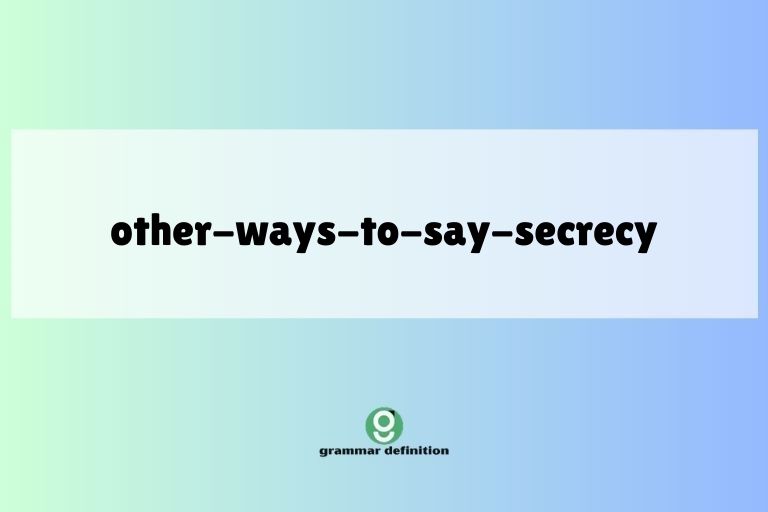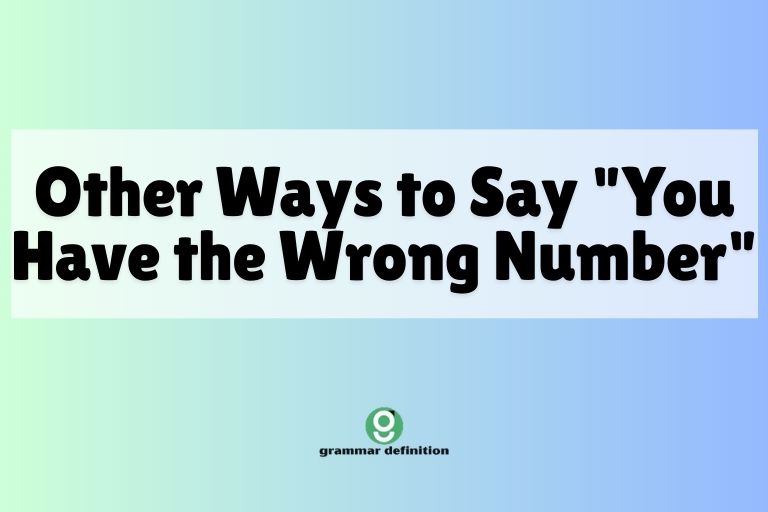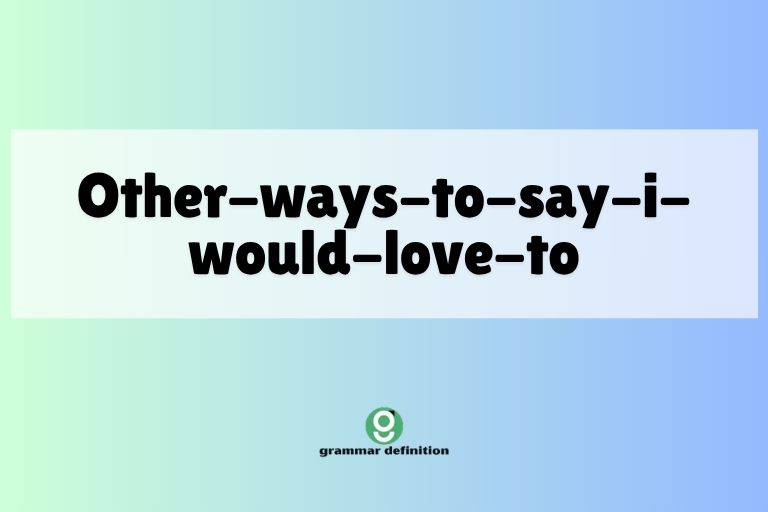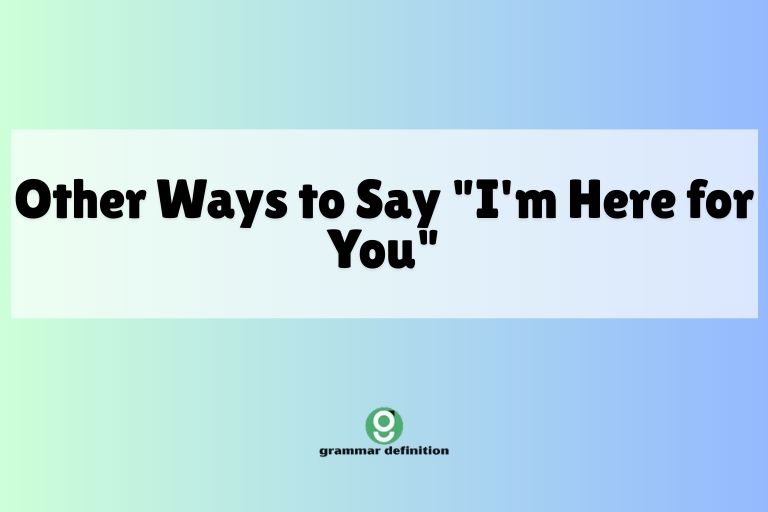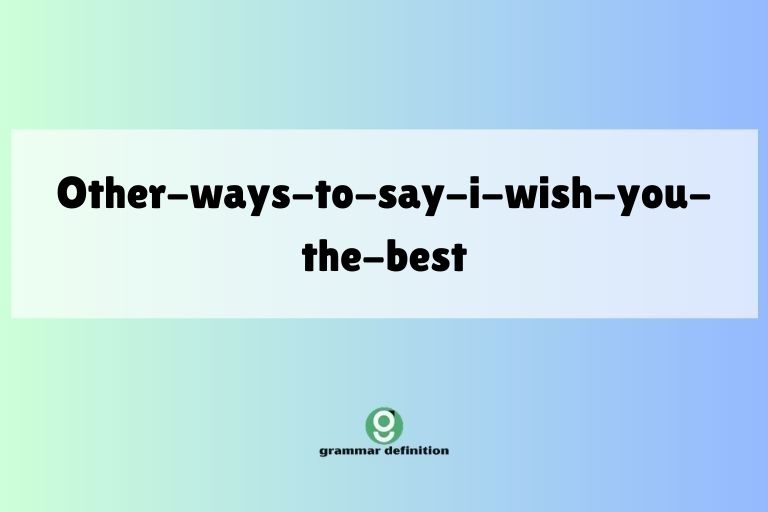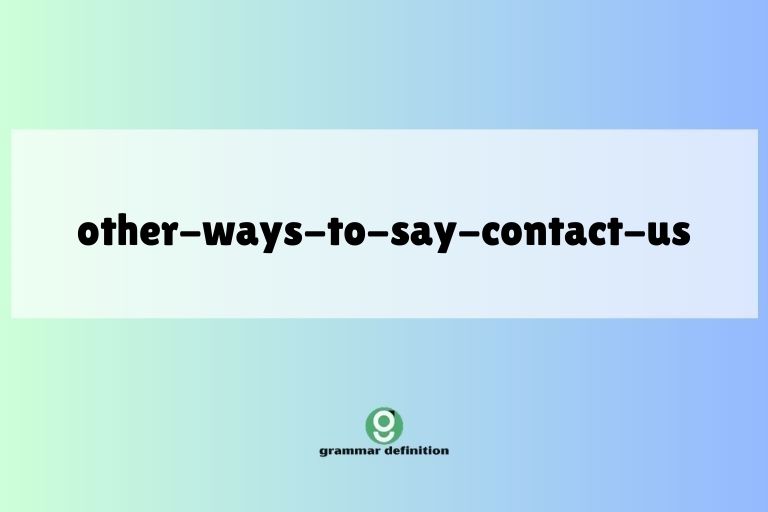Beyond ‘In Order To’: Mastering Purpose Clauses in English
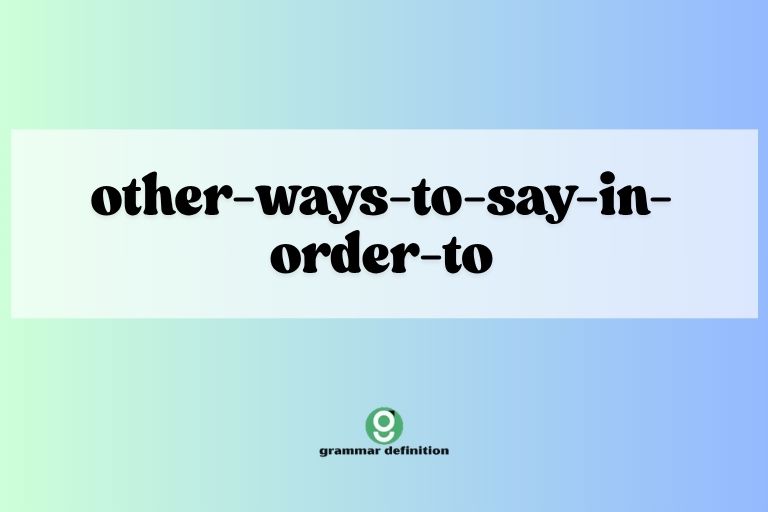
Expressing purpose is a fundamental aspect of English communication. While “in order to” is a common way to indicate why something is done, relying solely on it can make your writing and speech sound repetitive.
This article explores a variety of alternative phrases and grammatical structures that allow you to express purpose with greater nuance and sophistication. Understanding these alternatives will broaden your linguistic toolkit, enabling you to communicate more effectively and engagingly.
This comprehensive guide is designed for English language learners of all levels, from beginners seeking to expand their vocabulary to advanced speakers aiming to refine their stylistic expression.
Whether you are writing an academic paper, crafting a business proposal, or simply engaging in casual conversation, mastering the art of expressing purpose will significantly enhance your ability to articulate your ideas clearly and persuasively. By the end of this article, you’ll be equipped with a diverse range of phrases and grammatical structures to express purpose in a variety of contexts, making your communication more precise and impactful.
Table of Contents
- Introduction
- Defining Purpose Clauses
- Structural Breakdown of Purpose Clauses
- Types of Phrases to Express Purpose
- Examples of Expressing Purpose
- Usage Rules and Considerations
- Common Mistakes to Avoid
- Practice Exercises
- Advanced Topics: Subjunctive Mood
- Frequently Asked Questions
- Conclusion
Defining Purpose Clauses
A purpose clause is a subordinate clause that explains the reason or intention behind an action. It answers the question “Why?” The primary function of a purpose clause is to provide context and justification for the main clause.
These clauses often begin with conjunctions or phrases that signal purpose, such as “to,” “so that,” “in order that,” “for,” or “with a view to.”
Purpose clauses can be classified based on their structure (e.g., infinitive phrases, finite clauses) and the degree of formality they convey. Understanding the different types of purpose clauses allows for more precise and nuanced communication.
In essence, a purpose clause is a grammatical tool that clarifies the motivation behind an action or event.
Structural Breakdown of Purpose Clauses
The structure of a purpose clause typically involves a conjunction or preposition followed by a verb form. The most common structures include:
- “To” + infinitive: This is the simplest form and is often used for actions that are directly related to the main verb. Example: “I went to the store to buy milk.”
- “So as to” + infinitive: This is a more formal version of “to” + infinitive. Example: “He studied diligently so as to pass the exam.”
- “So that” + clause: This structure introduces a finite clause with a subject and a verb, often including modal verbs like “can,” “could,” “will,” or “would.” Example: “She saved money so that she could travel the world.”
- “In order that” + clause: Similar to “so that,” this is a more formal way to introduce a purpose clause. Example: “The instructions were clear in order that everyone could understand them.”
- “For” + noun/gerund: This structure indicates purpose using a preposition followed by a noun or gerund. Example: “This tool is used for cutting wood.”
- “With a view to” + gerund: This is a formal phrase that indicates a long-term aim or intention. Example: “The company invested in new technology with a view to increasing efficiency.”
Understanding these structural variations allows you to choose the most appropriate form for your desired level of formality and clarity. The choice of structure also depends on the relationship between the main clause and the purpose clause.
Types of Phrases to Express Purpose
“To” Infinitive
The “to” infinitive is one of the most common and versatile ways to express purpose. It directly connects the action in the main clause to the reason for that action.
The structure is simple: “to” + base form of the verb.
This form is suitable for both formal and informal contexts, making it a reliable choice for expressing purpose in a wide range of situations. It is particularly effective when the subject of the main clause and the purpose clause is the same.
“So as to”
“So as to” is a more formal alternative to “to” infinitive. It carries a slightly more emphatic tone, suggesting a deliberate intention.
The structure is “so as to” + base form of the verb.
This phrase is often used in academic writing, business reports, and other formal contexts where a higher level of precision and formality is required. It emphasizes the goal-oriented nature of the action being described.
“So that”
“So that” introduces a purpose clause that includes a subject and a verb, often with a modal verb such as “can,” “could,” “will,” or “would.” This structure is used when the purpose involves a separate action or outcome.
The use of a modal verb allows for expressing possibility, ability, or intention in the purpose clause. This structure is particularly useful when the subject of the main clause and the purpose clause are different.
“In order that”
“In order that” is a more formal and emphatic version of “so that.” It is used to introduce a purpose clause with a higher degree of formality and emphasis. The structure is “in order that” + subject + verb (often with a modal verb).
This phrase is typically found in legal documents, formal reports, and other contexts where clarity and precision are paramount. It leaves no doubt as to the intention behind the action being described.
“For”
“For” can be used as a preposition to express purpose when followed by a noun or a gerund (verb + -ing). This structure is concise and often used to describe the function or intended use of something.
The “for” + noun/gerund structure is commonly used in descriptions, instructions, and explanations where the purpose is directly related to the object or action being described. It is a versatile and efficient way to express purpose in a variety of contexts.
“With a view to”
“With a view to” is a formal phrase that expresses a long-term aim or intention. It is typically followed by a gerund (verb + -ing).
This structure suggests a strategic or forward-looking perspective.
This phrase is often used in business, planning, and policy-making contexts where the focus is on achieving a specific outcome over time. It implies a deliberate and considered approach to achieving a particular goal.
“For the purpose of”
“For the purpose of” is a formal phrase that clearly and explicitly states the reason for an action. It is typically followed by a gerund (verb + -ing) or a noun.
This structure is often used in legal and official documents.
This phrase is useful when you need to be absolutely clear about the intention behind an action, leaving no room for ambiguity. It is a more emphatic and deliberate way of expressing purpose than simpler alternatives.
“Lest”
“Lest” is a formal and somewhat archaic conjunction that expresses a negative purpose – to prevent something from happening. It is typically followed by a clause with “should” or a subjunctive verb form.
This conjunction is less common in modern English but can still be found in literary works and formal writing. It adds a sense of caution or warning to the expression of purpose.
The structure is “lest” + subject + should/verb.
Examples of Expressing Purpose
The following tables provide examples of how to use each phrase to express purpose in different contexts. Each table contains numerous examples, showcasing the versatility of each expression.
Table 1: Examples using “To” Infinitive
This table demonstrates the usage of the “to” infinitive to express purpose. Notice how the infinitive phrase directly follows the main clause, indicating the reason for the action.
| Example | Explanation |
|---|---|
| I went to the library to study. | The purpose of going to the library was to study. |
| She exercises regularly to stay healthy. | The purpose of exercising is to maintain good health. |
| He saved money to buy a car. | The purpose of saving money was to purchase a car. |
| They traveled to Italy to see the Colosseum. | The purpose of traveling to Italy was to visit the Colosseum. |
| We eat to live, not live to eat. | The purpose of eating is to sustain life, not the other way around. |
| He whispered to avoid waking the baby. | The purpose of whispering was to prevent the baby from waking up. |
| She wore a coat to keep warm. | The purpose of wearing a coat was to stay warm. |
| They practice every day to improve their skills. | The purpose of daily practice is to enhance their abilities. |
| I called him to ask for advice. | The purpose of calling him was to seek guidance. |
| She went to the doctor to get a check-up. | The purpose of visiting the doctor was to have a medical examination. |
| He studied hard to pass the exam. | The purpose of studying hard was to succeed in the exam. |
| They built a fence to protect their garden. | The purpose of building a fence was to safeguard their garden. |
| We need water to survive. | The purpose of needing water is to stay alive. |
| She works overtime to earn extra money. | The purpose of working overtime is to gain additional income. |
| He installed solar panels to save on electricity bills. | The purpose of installing solar panels was to reduce electricity costs. |
| They organized a protest to raise awareness. | The purpose of organizing a protest was to increase public knowledge. |
| I write to express myself. | The purpose of writing is to convey personal thoughts and feelings. |
| She volunteers at the shelter to help animals. | The purpose of volunteering is to assist animals in need. |
| He learned Spanish to travel in South America. | The purpose of learning Spanish was to facilitate travel in South America. |
| They invested in the company to increase their profits. | The purpose of investing was to enhance their financial gains. |
| She woke up early to catch the sunrise. | The purpose of waking up early was to witness the sunrise. |
| He left the party early to get some rest. | The purpose of leaving early was to obtain rest. |
| She practices yoga to reduce stress. | The purpose of practicing Yoga is to reduce stress. |
Table 2: Examples using “So as to”
This table illustrates the usage of “so as to,” a more formal alternative to “to” infinitive. Notice the slightly more emphatic tone compared to the previous examples.
| Example | Explanation |
|---|---|
| He studied diligently so as to pass the exam. | He studied hard with the specific intention of passing the exam. |
| She arrived early so as to get a good seat. | She arrived promptly with the aim of securing a favorable seat. |
| They saved money so as to buy a house. | They accumulated savings with the objective of purchasing a house. |
| We trained hard so as to win the competition. | We underwent rigorous training with the purpose of winning the competition. |
| He spoke clearly so as to be understood. | He articulated his words distinctly with the intention of being understood. |
| She dressed formally so as to make a good impression. | She dressed elegantly with the aim of creating a favorable impression. |
| They planned carefully so as to avoid mistakes. | They formulated their plans meticulously with the intention of preventing errors. |
| He exercised regularly so as to maintain his health. | He engaged in regular physical activity with the purpose of preserving his health. |
| She researched thoroughly so as to provide accurate information. | She conducted extensive research with the aim of providing precise information. |
| They negotiated skillfully so as to reach a favorable agreement. | They engaged in adept negotiation with the intention of achieving a positive agreement. |
| He invested wisely so as to secure his financial future. | He made prudent investments with the purpose of securing his financial stability. |
| She organized meticulously so as to ensure a successful event. | She planned with great attention to detail with the aim of ensuring a successful event. |
| They cooperated effectively so as to achieve their common goals. | They worked together efficiently with the intention of achieving their shared objectives. |
| He communicated openly so as to build trust with his team. | He communicated transparently with the aim of fostering trust within his team. |
| She adapted quickly so as to meet the changing demands. | She adjusted rapidly with the purpose of fulfilling the evolving requirements. |
| They innovated creatively so as to gain a competitive edge. | They introduced creative innovations with the aim of securing a competitive advantage. |
| He listened attentively so as to understand the speaker’s perspective. | He paid close attention to the speaker with the intention of understanding their viewpoint. |
| She prepared thoroughly so as to deliver a compelling presentation. | She prepared exhaustively with the aim of delivering a captivating presentation. |
| They managed resources efficiently so as to maximize their profits. | They managed resources effectively with the purpose of maximizing their profits. |
| He mentored diligently so as to develop the next generation of leaders. | He mentored meticulously with the aim of developing future leaders. |
| She volunteered consistently so as to make a positive impact on her community. | She volunteered regularly with the intention of positively impacting her community. |
Table 3: Examples using “So that”
This table demonstrates the usage of “so that,” which introduces a purpose clause with a subject and verb, often including a modal verb.
| Example | Explanation |
|---|---|
| She saved money so that she could travel the world. | She saved money with the intention of being able to travel the world. |
| He studied hard so that he would get good grades. | He studied diligently with the aim of achieving good grades. |
| They planted trees so that future generations would have shade. | They planted trees with the intention of providing shade for future generations. |
| We left early so that we wouldn’t miss the train. | We departed early with the aim of avoiding missing the train. |
| He spoke slowly so that everyone could understand him. | He spoke deliberately with the intention of ensuring everyone understood him. |
| She wore a hat so that the sun wouldn’t burn her face. | She put on a hat with the goal of preventing sunburn. |
| They locked the door so that no one could enter without permission. | They locked the door with the intention of preventing unauthorized entry. |
| He exercised regularly so that he could stay in shape. | He worked out regularly with the goal of maintaining his fitness. |
| She took notes so that she wouldn’t forget the important details. | She jotted down notes with the purpose of preventing her from forgetting key details. |
| They invested in renewable energy so that they could reduce their carbon footprint. | They invested in renewable energy with the intention of lowering their carbon footprint. |
| He set an alarm so that he wouldn’t oversleep. | He set an alarm with the goal of preventing oversleeping. |
| She wrote down the recipe so that she could recreate the dish later. | She noted the recipe with the purpose of recreating the dish at a later time. |
| They practiced their lines so that they would perform well on stage. | They rehearsed their lines with the intention of delivering a strong performance. |
| He saved his work frequently so that he wouldn’t lose his progress. | He saved his work often with the goal of preventing data loss. |
| She packed an umbrella so that she wouldn’t get wet in the rain. | She packed an umbrella with the intention of avoiding getting wet. |
Table 4: Examples using “In order that”
This table provides examples using the more formal “in order that.” Notice the increased emphasis on the intended purpose.
| Example | Explanation |
|---|---|
| The instructions were clear in order that everyone could understand them. | The instructions were made clear with the specific intention that everyone would understand them. |
| He spoke slowly and precisely in order that there would be no misunderstandings. | He spoke deliberately and accurately with the goal of preventing misunderstandings. |
| She documented the process carefully in order that future employees could follow it. | She documented the process thoroughly with the intention that future employees could replicate it. |
| They installed security cameras in order that they might deter crime. | They installed security cameras with the purpose of deterring criminal activity. |
| He provided detailed feedback in order that she could improve her performance. | He offered detailed feedback with the aim of helping her enhance her performance. |
| She organized the files systematically in order that they could be easily accessed. | She organized the files methodically with the purpose of facilitating easy access. |
| They implemented strict regulations in order that the environment would be protected. | They implemented stringent regulations with the intention of protecting the environment. |
| He conducted thorough research in order that he could make informed decisions. | He conducted extensive research with the aim of making informed decisions. |
| She communicated transparently in order that trust could be built with the stakeholders. | She communicated openly with the intention of fostering trust among stakeholders. |
| They invested in training programs in order that their employees might develop new skills. | They invested in training programs with the purpose of enabling their employees to acquire new skills. |
Table 5: Examples using “For”
This table demonstrates the use of “for” followed by a noun or gerund to express purpose. This construction is often used to describe the function of something.
| Example | Explanation |
|---|---|
| This tool is used for cutting wood. | The purpose of this tool is to cut wood. |
| This room is for meetings. | The purpose of this room is to hold meetings. |
| He went to the store for groceries. | The purpose of going to the store was to buy groceries. |
| She uses this app for editing photos. | The purpose of using this app is to edit photos. |
| They are raising money for charity. | The purpose of raising money is to donate to charity. |
| The gym is for exercising. | The purpose of the gym is for people to exercise. |
| She uses her phone for communication. | The purpose of her phone is for communication. |
| He went to school for education. | The purpose of going to school is to get an education. |
| They use this software for data analysis. | The purpose of this software is for data analysis. |
| This medicine is for relieving pain. | The purpose of this medicine is to relieve pain. |
| I am saving money for retirement. | The purpose of saving money is for retirement. |
| She is taking classes for personal development. | The purpose of taking classes is for personal development. |
| He is learning a new language for travel. | The purpose of learning a new language is for travel. |
| They are volunteering for community service. | The purpose of volunteering is for community service. |
Usage Rules and Considerations
When choosing the appropriate phrase to express purpose, consider the following:
- Formality: “So as to” and “in order that” are more formal than “to” infinitive or “so that.”
- Subject Agreement: If the subject of the main clause and the purpose clause is the same, “to” infinitive is often the most concise option.
- Modal Verbs: Use “so that” or “in order that” when you need to include a modal verb to express possibility, ability, or intention.
- Clarity: Choose the phrase that most clearly and unambiguously expresses the intended purpose.
- Context: Consider the audience and the overall tone of your writing or speech.
It’s also important to maintain consistency in your usage. Avoid switching between formal and informal phrases within the same piece of writing unless there is a specific reason to do so.
Common Mistakes to Avoid
Here are some common mistakes to avoid when expressing purpose:
- Incorrect Use of “So to”: “So to” is not a correct construction. Always use “so as to.”
- Incorrect: He studied hard so to pass the exam.
- Correct: He studied hard so as to pass the exam.
- Misusing “For to”: “For to” is an archaic construction and should be avoided in modern English. Use “to” infinitive instead.
- Incorrect: I went to the store for to buy milk.
- Correct: I went to the store to buy milk.
- Incorrect Verb Form after “To”: Always use the base form of the verb after “to.”
- Incorrect: She went to the gym to exercising.
- Correct: She went to the gym to exercise.
- Not Including a Modal Verb with “So that” or “In Order That”: While not always required, including a modal verb often clarifies the intention.
- Less Clear: He saved money so that he travel the world.
- Clearer: He saved money so that he could travel the world.
By being aware of these common mistakes, you can ensure that your expressions of purpose are clear, accurate, and grammatically correct.
Practice Exercises
Complete the following sentences using the appropriate phrase to express purpose.
Exercise 1: Fill in the blanks with “to,” “so as to,” or “so that.”
| Question | Answer |
|---|---|
| 1. She went to the library _______ study for her exam. | to |
| 2. He exercised regularly _______ stay healthy. | to |
| 3. They saved money _______ buy a house. | to |
| 4. He spoke clearly _______ be understood by everyone. | so as to |
| 5. She arrived early _______ get a good seat. | so as to |
| 6. She saved money _______ she could travel the world. | so that |
| 7. He studied hard _______ he would get good grades. | so that |
| 8. They planted trees _______ future generations would have shade. | so that |
| 9. I turned on the lights _______ I could see better. | so that |
| 10. He whispered _______ not to wake the baby. | so as |
Exercise 2: Rewrite the sentences using “in order that.”
| Question | Answer |
|---|---|
| 1. The instructions were clear so everyone could understand them. | The instructions were clear in order that everyone could understand them. |
| 2. He spoke slowly and precisely so there would be no misunderstandings. | He spoke slowly and precisely in order that there would be no misunderstandings. |
| 3. She documented the process carefully so future employees could follow it. | She documented the process carefully in order that future employees could follow it. |
| 4. They installed security cameras so they might deter crime. | They installed security cameras in order that they might deter crime. |
| 5. He provided detailed feedback so she could improve her performance. | He provided detailed feedback in order that she could improve her performance. |
| 6. She organized the files systematically so they could be easily accessed. | She organized the files systematically in order that they could be easily accessed. |
| 7. They implemented strict regulations so the environment would be protected. | They implemented strict regulations in order that the environment would be protected. |
| 8. He conducted thorough research so he could make informed decisions. | He conducted thorough research in order that he could make informed decisions. |
| 9. She communicated transparently so trust could be built with the stakeholders. | She communicated transparently in order that trust could be built with the stakeholders. |
| 10. They invested in training programs so their employees might develop new skills. | They invested in training programs in order that their employees might develop new skills. |
Exercise 3: Combine the sentences using “for.”
| Question | Answer |
|---|---|
| 1. This tool is used. It cuts wood. | This tool is used for cutting wood. |
| 2. This room is used. It hosts meetings. | This room is for meetings. |
| 3. He went to the store. He needed groceries. | He went to the store for groceries. |
| 4. She uses this app. She edits photos. | She uses this app for editing photos. |
| 5. They are raising money. They want to donate to charity. | They are raising money for charity. |
| 6. The gym is used by people. They want to exercise. | The gym is for exercising. |
| 7. She uses her phone. She wants communication. | She uses her phone for communication. |
| 8. He went to school. He wants an education. | He went to school for education. |
| 9. They use this software. They have data to analyze. | They use this software for data analysis. |
| 10. This medicine has a purpose. It relieves pain. | This medicine is for relieving pain. |
Advanced Topics: Subjunctive Mood
In formal English, particularly with “lest” and sometimes with “in order that,” the subjunctive mood may be used. The subjunctive mood expresses a hypothetical or desired situation.
With “lest,” it often involves “should” + base form of the verb. With “in order that,” the subjunctive involves the base form of the verb (without “to”) for all persons.
Example:
- He wore a disguise lest he be recognized. (Subjunctive: be instead of is)
- Regulations were set in order that all members have equal access.
The use of the subjunctive mood adds a layer of formality and emphasis to the expression of purpose. While less common in everyday speech, it is important to recognize and understand its usage in formal writing and legal documents.
Frequently Asked Questions
- What is the difference between “so that” and “in order that”?
Both phrases introduce purpose clauses, but “in order that” is more formal and emphatic than “so that.” “In order that” is typically used in more formal writing, while “so that” is acceptable in both formal and informal contexts. The choice between the two often depends on the desired tone and level of formality.
- Can I use “for” followed by an infinitive to express purpose?
No, “for” is typically followed by a noun or a gerund (verb + -ing) to express purpose. Using “for” followed by an infinitive is grammatically incorrect. The correct structure is “to” followed by an infinitive or “for” followed by a noun or gerund.
- Is it always necessary to include a modal verb after “so that” or “in order that”?
No, it is not always necessary, but including a modal verb (such as “can,” “could,” “will,” or “would”) often clarifies the intention and makes the purpose clause more explicit. The choice depends on the specific meaning you want to convey. If the intention is clear without a modal verb, it can be omitted.
- When should I use “with a view to” instead of other phrases?
“With a view to” is used when expressing a long-term aim or intention. It suggests a strategic or forward-looking perspective. This phrase is most appropriate when the purpose involves a deliberate and considered approach to achieving a specific outcome over time.
- Is “lest” commonly used in modern English?
No, “lest” is not commonly used in modern English. It is considered archaic and is more frequently found in literary works or formal writing. In contemporary contexts, alternative phrases like “so that… not” or “in order to avoid” are generally preferred for expressing a negative purpose.
Conclusion
Mastering the art of expressing purpose in English involves understanding the nuances and variations among different phrases and grammatical structures. While “in order to” serves as a basic tool, expanding your repertoire with alternatives like “to” infinitive, “so as to,” “so that,” “for,” “with a view to,” and “for the purpose of” allows for more precise and effective communication.
By considering the level of formality, subject agreement, and the need for modal verbs, you can choose the most appropriate phrase for any given context.
Moreover, avoiding common mistakes and practicing these expressions will solidify your understanding and enhance your fluency. Whether you are writing a formal report, engaging in casual conversation, or crafting persuasive arguments, the ability to express purpose clearly and accurately is an invaluable asset.
Embrace these alternatives, and elevate your English communication skills to new heights.

